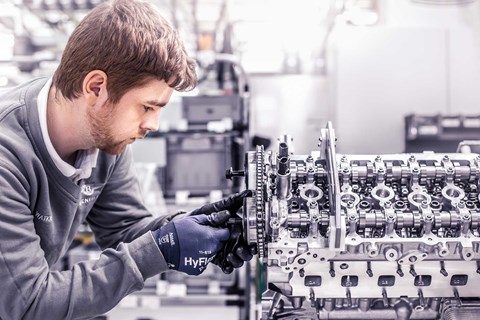► Bentley’s unusual W12 comes to an end
► Last deployment in the Batur special
► W12 this was your life: 2003-2024
The distinctive Bentley W12 – the engine that propelled the Continental GT to super-coupe success two decades ago – has reached the end of the road.
Crewe has announced it will end production of the unusually-formatted motor in April 2024. Its final swansong? The most powerful W12 ever made will power the low-volume Bentley Batur coupe from the bespoke Mulliner division. It bows out in a 740bhp blaze of glory – boasting a typically flat Bentley torque curve of 737lb ft plateauing from 1750-5000rpm. All 18 units have already been sold.
Thirty staff at Crewe assemble the W12 by hand and the factory pledges that all will be retrained. By the time they build the final engine in spring 2024, around 105,000 examples of the 12-cylinder motor will have been manufactured in a little over two decades.
Why Bentley has beehives at its Crewe factory
Why is Bentley stopping making the W12?
Large, 6.0-litre capacity multi-cylinder engines are fighting against a carbon-crunched zeitgeist that’s forcing downsizing and, ultimately, electrification on every car manufacturer. Bentley is not immune to these external pressures and its Beyond100 strategy plans for every Bentley to be electrified by 2030.

By the time the W12 is euthanised in 2024, every model range from Bentayga to Flying Spur will have a hybrid powertrain option, as a stepping stone to full EVs. The factory area where the W12 is built will become space for V8 and V6 hybrid production.
It takes 6.5 hours to build each W12. The engine is essentially two narrow-angle V6s co-joined to create the W layout – making it 24% shorter than a V12 of equivalent capacity. Over two decades, the 6.0-litre engine has seen power increase by 37% and torque by 54%, while emissions have fallen by a quarter, thanks to optimised combustion, engine management, oil and cooling systems, and turbocharging technology.
Chairman and chief exec Adrian Hallmark said: ‘When we first launched the W12 back in 2003, we knew we had a mighty engine that would propel both our cars and the brand forwards at speed. Twenty years and more than 100,000 W12s later, the time has come to retire this now-iconic powertrain as we take strides towards electrification – but not without giving it the best send-off possible, with the most powerful version of the engine ever created.’
Bentley electric cars: everything you need to know